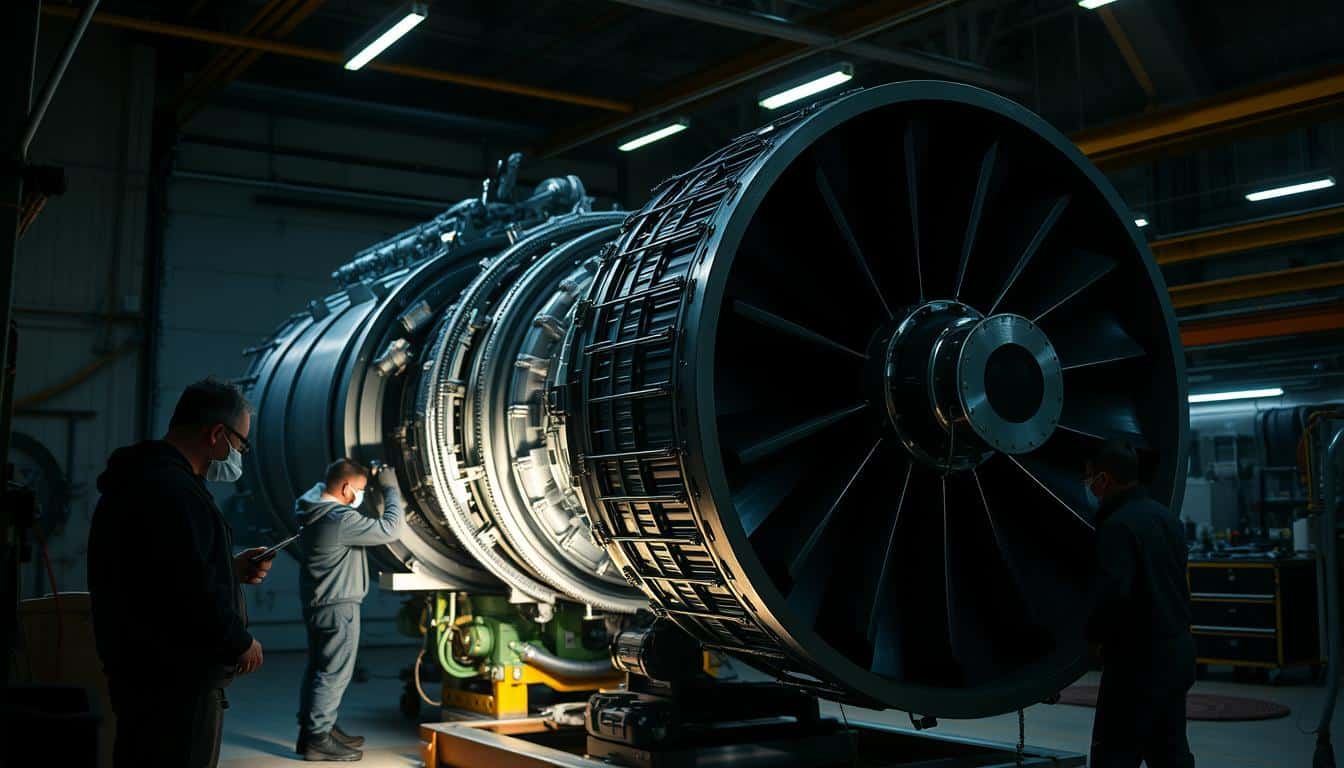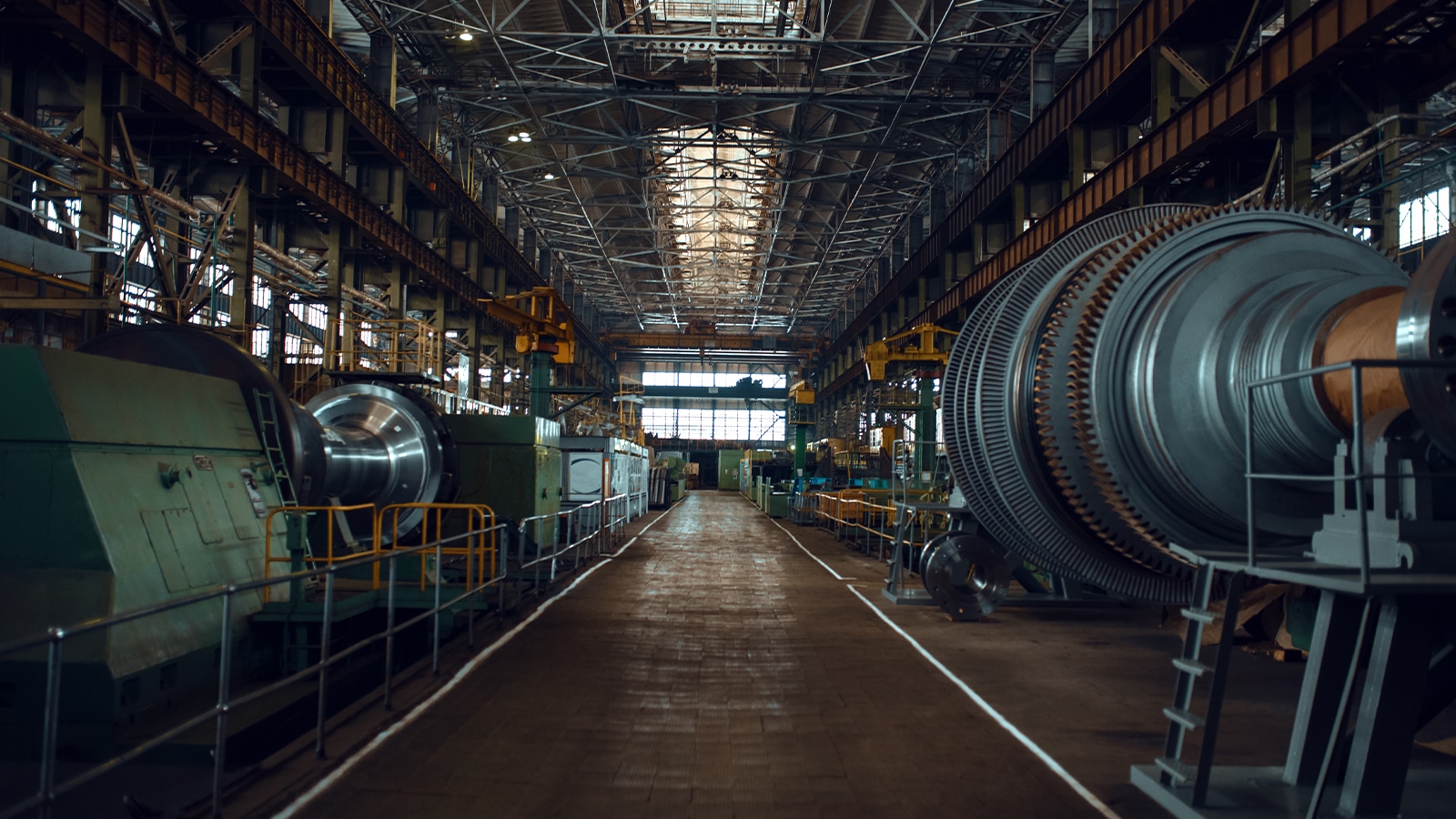
Power plant operators must decide between on-site field services and off-site shop repairs for gas turbine maintenance. This choice affects outage duration, repair quality, and operational efficiency. It’s a critical decision that can significantly influence the plant’s performance.
Logic might suggest that shop repairs are more effective due to better equipment and controlled conditions. Yet, plant owners often hesitate to send expensive gas and steam turbine equipment off-site. They fear that delayed returns could extend the outage period. However, with the push for shorter outage durations, both field and shop repairs must offer fast turnaround times.
Deciding between field service and shop repairs for gas turbine maintenance requires careful thought. Consider the urgency of the repair, the complexity of the issue, budget constraints, and the logistics of transporting turbine components.
By understanding the pros and cons of each approach, power plant operators can optimize their outage services. This ensures the long-term reliability and performance of their gas turbine assets.
Key Takeaways
- Gas turbine repair decisions during outages involve choosing between on-site field services and off-site shop repairs.
- Shop repairs offer controlled environments and specialized equipment, while field services minimize downtime and transportation costs.
- Factors influencing repair decisions include urgency, complexity, budget, and equipment mobility.
- Shorter outage durations necessitate faster turnaround times for both field and shop repair options.
- Careful consideration of repair approaches is crucial for optimizing outage services and ensuring gas turbine reliability.
The Critical Nature of Gas Turbine Maintenance
Ensuring the reliability and optimal performance of gas turbines hinges on proper maintenance. Regular inspections, repairs, and overhauls prevent unplanned outages. They also extend equipment lifespan and reduce operational costs. A comprehensive maintenance approach is necessary, covering both routine servicing and major overhauls.
Common Gas Turbine Failure Modes
Gas turbines face various failure modes that can affect their performance and reliability. Common issues include:
- Component cracking due to thermal stress and fatigue
- Foreign object damage from ingested debris
- Oxidation and corrosion of hot gas path components
- Bearing and lubrication system failures
- Combustion system degradation and hot spots
Impact of Repair Decisions on Operational Efficiency
The decision between field repairs and shop repairs significantly influences operational efficiency. Considerations include:
| Factor | Field Repair | Shop Repair |
|---|---|---|
| Downtime | Minimized | Extended |
| Repair Quality | Adequate for immediate needs | Comprehensive and precise |
| Equipment Availability | Limited to on-site tools | Full shop capabilities |
| Cost | Lower upfront, potential for recurrence | Higher upfront, long-term savings |
Optimizing gas turbine performance and minimizing total cost of ownership requires balancing these factors.
Risk Assessment in Repair Planning
Effective repair planning for gas turbines involves thorough risk assessment. This process helps prioritize maintenance activities and allocate resources efficiently. It also mitigates potential failures. Key considerations include:
- Identifying critical components and systems
- Analyzing historical failure data and trends
- Evaluating the impact of failures on production and revenue
- Assessing the feasibility and cost of repair options
- Developing contingency plans for unexpected issues
By conducting comprehensive risk assessments, gas turbine operators can make informed decisions. This optimizes reliability and minimizes outage durations.
Field vs Shop Gas Turbine Repairs: Key Differences
Gas turbine repair can be approached in two ways: field service repairs and in-shop repairs. The choice between these depends on several factors. These include the repair’s extent, the equipment’s location, and the urgency of the situation. Let’s delve into the distinct features of each method.
On-Site Field Repair Characteristics
Field service repairs are conducted directly at the power plant or industrial site. This method is preferred for minor repairs, those not requiring significant disassembly, or when moving the turbine component is challenging. It’s ideal for quick fixes, as it allows for the turbine’s rapid return to operation post-repair.
Shop-Based Repair Characteristics
In-shop repairs involve moving the turbine components to a dedicated service center for more detailed work. This is crucial for extensive overhauls, complex repairs, or when specialized tools are essential. The service center provides a controlled setting for precise and comprehensive repairs. Yet, this approach typically results in longer downtime due to the extensive nature of the repairs and transportation.
Initial Assessment Protocols
The first step in any repair is a detailed inspection and assessment of the gas turbine. This initial evaluation is critical in determining the damage’s extent, the required repairs, and the best course of action. Various diagnostic methods, including borescope inspections, vibration analysis, and thermal imaging, are employed during this phase.
| Repair Approach | Typical Scenarios | Key Advantages | |||
|---|---|---|---|---|---|
| Field Service Repairs | – Minor inspections | – No major disassembly required | – Difficult to transport components | – Minimized downtime | – Quick return to service |
| In-Shop Repairs | – Major overhauls | – Complex repairs | – Specialized equipment needed | – Controlled environment | – Precise and thorough work |
Advantages of Field Repairs
Field repairs for gas turbines bring several key benefits to power plant operators. They allow for on-site maintenance, which cuts downtime, slashes transportation costs, and ensures quick responses to emergencies.
Minimized Downtime Benefits
Field repairs stand out for their ability to reduce downtime. A turbine failure or maintenance need can lead to lost revenue and efficiency drops. On-site repairs by field teams quickly pinpoint and fix issues, cutting downtime and speeding up service return.
Transportation Cost Elimination
Another plus of field repairs is avoiding transportation costs. Removing and shipping a turbine component to a repair shop adds time and expense. On-site repairs eliminate these costs, saving money for the power plant.
Real-Time Problem Solving
Field repairs foster real-time problem-solving. Technicians can work with on-site staff to create solutions specific to the plant’s needs. This quick, adaptable approach is key to minimizing downtime and ensuring repairs are successful.
Immediate Return to Service
Lastly, field repairs enable an immediate return to service. Unlike shop repairs, which require reinstallation and testing, field repairs allow for quick turbine operation. This rapid capability is vital in today’s fast-paced power markets, where every moment is crucial.
Benefits of Shop-Based Repairs
Shop-based solutions for gas turbine repairs come with significant advantages over field repairs. The controlled environment and specialized equipment in a dedicated repair shop enable technicians to perform high-quality, comprehensive overhauls. These overhauls optimize turbine performance and extend its lifespan.
Controlled Environment Advantages
One key benefit of shop-based repairs is the controlled environment. Unlike field repairs, which face unpredictable weather and external factors, in-house shops offer a stable setting. This environment ensures precision and consistency in repairs, leading to superior outcomes.
Access to Specialized Equipment
Repair shops are equipped with advanced, modern technology not available in the field. Tools like high-speed balancing machines allow for precise repairs, ensuring optimal turbine performance. These cutting-edge tools often lead to better results than field repairs.
Comprehensive Testing Protocols
Shop-based repairs also benefit from thorough testing protocols. These protocols enable technicians to assess turbine performance and identify issues before service. In a controlled setting, shops can ensure turbines meet or exceed specifications, reducing future failure risks.
Root Cause Analysis Opportunities
Lastly, shop-based repairs offer better opportunities for root cause analysis. With advanced diagnostic tools and time for detailed investigations, technicians can uncover deeper failure causes. This analysis informs current repairs and prevents future issues, enhancing turbine reliability and longevity.
Decision Factors: When to Choose Field or Shop Repairs
Choosing between field and shop repairs for gas turbines is critical for reducing downtime and enhancing repair services. Project managers must evaluate several key factors to decide the best approach for each situation.
Urgency and Downtime Tolerance
The urgency of the repair and downtime tolerance are key considerations. Field repairs are ideal for quick turnaround, minimizing outage duration. Yet, if there’s flexibility in the schedule, shop repairs for a more thorough service might be viable.
Repair Complexity Assessment
Repair complexity is another critical factor. Minor issues and routine maintenance can often be handled on-site. However, complex repairs, like those involving the rotor or combustion system, require specialized equipment and a controlled environment found in shops.
Budget Considerations
Budget constraints are also significant. Field repairs might be more cost-effective, especially when transportation costs are high or repairs are simple. Yet, shop repairs can offer long-term savings by ensuring quality and reducing future failure risks.
Equipment Mobility Constraints
The mobility of the equipment is crucial. Some components, like stators, are hard and expensive to transport due to size and weight. In such cases, field repairs are often the only viable option. Project managers must weigh the feasibility and cost of moving components to choose the best repair method.
| Decision Factor | Field Repair | Shop Repair |
|---|---|---|
| Urgency | High | Low to Moderate |
| Repair Complexity | Low to Moderate | High |
| Budget Constraints | Favors Field Repair | Favors Shop Repair |
| Equipment Mobility | Limited | Feasible |
By carefully weighing these factors, project managers can ensure the chosen repair method meets the specific needs and constraints of each scenario. This approach minimizes downtime and maximizes the effectiveness of repair services.
Industry Trends in Gas Turbine Maintenance
The gas turbine maintenance field is undergoing a major transformation. This change is driven by new technologies and innovative methods. These shifts are altering both field and shop repair practices. They are making maintenance more efficient, precise, and proactive.
Technological Advancements in Field Repair
Field repair teams now have access to advanced tools and technologies. These tools improve their diagnostic and repair abilities. With eddy current array testing and 3D scanning, they can accurately assess turbine components on-site like compressors, blades, and coatings. Robotic inspection systems also allow them to reach areas that were previously inaccessible, providing detailed data for better decision-making.
Shop Repair Innovation
Shop-based repairs are also evolving, thanks to cutting-edge equipment and techniques. Specialized facilities use advanced machining and welding to ensure precise and durable repairs. Digital twin technology is being used to create virtual models of gas turbine parts. This allows engineers to simulate repair scenarios and optimize maintenance service strategies.
Predictive Maintenance Integration
Predictive maintenance is becoming a key part of gas turbine maintenance programs. It uses sensor data, machine learning algorithms, and advanced analytics to anticipate potential failures. This way, operators can schedule repairs before they happen, reducing unplanned downtime and extending the life of critical components.
Remote Monitoring Impact on Repair Decisions
Remote monitoring technologies are changing how maintenance decisions are made. Real-time data from sensors and monitoring systems offer insights into equipment health and performance. This data helps maintenance teams decide when and where to conduct repairs, optimizing resource allocation and reducing operational disruptions.
“The integration of advanced technologies and predictive maintenance strategies is transforming the gas turbine maintenance landscape. By leveraging these innovations, we can enhance the reliability, efficiency, and longevity of our turbine assets.”
Conclusion – Outage Planning for Gas Turbine Repair
The decision between field and shop repairs for gas turbine services is crucial for power generation operators. A detailed evaluation of each turbine’s unique needs is vital. This ensures minimal downtime and optimal long-term performance. By combining experienced assessment with the latest repair technologies, operators can make informed decisions.
Successful gas turbine repair, whether on-site or in a specialized shop, requires a strategic maintenance approach. This includes careful planning, clear communication, and expert execution. Partnering with a reputable full-service provider is essential for reliable, responsive support. These providers have the expertise and resources needed to tackle the complex challenges of gas turbine repair.
As technology advances, power plant operators must stay updated on the latest trends in gas turbine maintenance. Adopting cutting-edge solutions and a proactive maintenance approach can optimize turbine and generator performance. The choice between field and shop repairs should be based on a thorough assessment of urgency, repair complexity, budget, and equipment mobility. The goal is to achieve the best outcome for the power generation facility.

